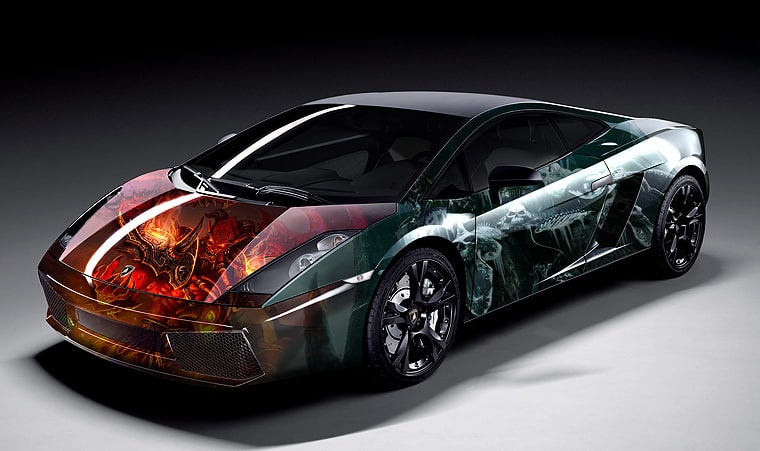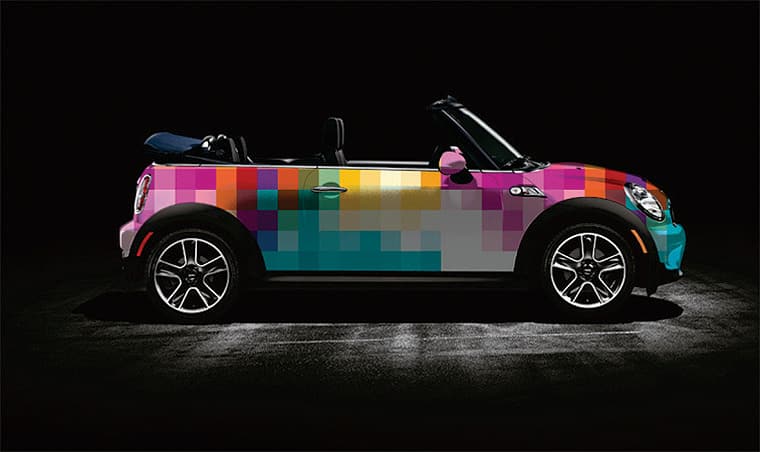The Definitive Guide to Vehicle Car Wraps
There are two different types of car wraps in the market: pre-cured and digitally printed. The former are designed on computers and printed on wide-format printers. Pre-cured ones, on the other hand, come in a number of textured films and solid colors.
Adding a professional car wrap to a vehicle can enhance its design and visuals in ways not previously thought possible. Car wraps allow true designer creativity to shine through and can easily be replaced or removed.

When it comes to car wraps, there are two categories of wrap films: cast and calendared. Cast is thinner when compared to calendared vinyl, which contains an aggressive adhesive. Both of these categories can be used for pre-cured and digitally printed wraps.
However, calendared wraps should not be used on vehicles because they do not conform to convex or concave vehicle shapes.
Digital Printing Technology
Three types of wide-format printers are usually used to print on vinyl: latex, solvent/eco-solvent, and UV. You should only look for shops that utilize OEM inks because other inks usually show pixilation and affect the vinyl’s ability to adhere to the car.
- Eco-solvent/solvent – these original printers usually use very sticky, aggressive inks. The printers are also known for “off-gas†or saturating time to dry. The main disadvantage of solvent/eco-solvent printers is that when they are not given enough time to “off-gasâ€, the wraps printed on them are prone to failure. Why is this? The heavy ink concentration attacks the adhesive at the back of the wrap, rendering it useless. Additionally, prints that are laminated too soon after printing become bubbly and cloudy as the ink fumes are trapped under the laminate. The minimum “off-gas†period should be 48 hours.
- Latex – this is the most recent and greatest technology in the world of car wraps. It uses inks that are less abrasive than those used in solvent printers. The printers are unique because they use extremely high-powered heaters and multiple fans to cure the ink as it is laid down on the vinyl. This results in prints that are dry immediately after being printed. Latex printers eliminate the need to “off-gasâ€, making them ideal in the vehicle wrap industry. Moreover, latex ink is more flexible, making it better for applications that require vinyl to stretch around curves.
- UV – these printers are not recommended for car wraps because the curing process – done under UV lighting – makes the ink brittle after drying. UV printers are great for doing window graphics and signage. However, when you try to fit UV printed vinyl around cars, there is a greater chance that the ink will crack underneath the laminate.
Car Wrap Installation
When it comes to vinyl car wraps, you should only have yours installed by a professional vehicle wrap installer. It is unfortunate that most people think they can install car wraps because they have done it once using a squeegee.

Such people have no business offering their services to unsuspecting customers who pay for good quality installations. Professional installers have tricks that can only be gotten from years of experience and formal training.
They also know how to prepare the surface of the vehicle for wrapping. Moreover, they know how far to stretch the film before the image becomes distorted.
Designing vinyl car wraps is not like any other graphic design project. You should have an intimate understanding of the installation and production process in order to design wraps. You need to know where the wrap will be installed, where the seams will be, and where the text will go. Furthermore, car wraps need to be designed on 3-dimensional renderings of the car on which the wrap will be applied. Shops using the outline of your car to design wraps should not be taken seriously.



